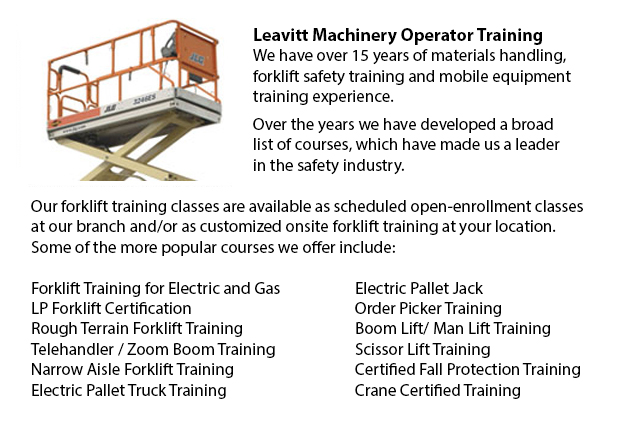
Scissor Lift License Burlington - The is an inherent chance in operating a scissor lift, as with all types and kinds of powered work tools will require correct handling to be able to prevent accidents that might result in damage or injuries. Companies should ensure that workers using this machinery have the required experience.
Unqualified personnel should not be permitted by their companies to make use of scissor lifts. The lift is designed to raise people and materials to varied heights. Failure to understand and fully follow safety standard could lead to damage to the lift or injuries for users.
For those who use scissor lifts, there is no legislation governing the utilization of fall protection. Nonetheless, manufacturers can recommend the utilization of fall protection and in some situations tying off in scissor lifts might be required by employer guidelines, local regulations or job-specific risk assessment.
In order to make sure that the scissor lift is in good working condition before using the machinery, the operator has to perform a thorough check. This is the operator's job, even though the unit has already been in service that day. The operator's instruction manual of the equipment contains a pre-operation checklist.
Examples of what to look for when doing a pre-operation check include checking tire-inflation pressure, and checking controls in the platform and ground controls in order to ensure they are functioning. When retracting or extending the boom, look for delayed movement on the fly section which may indicate cables are loose. While operating the controls, make certain that the emergency stop switches are working. Operate functions against the machine's cutout switches. Test the boom control system by cycling a boom lift to the furthest extent of its operating envelope. Safety limiters should automatically stop the unit before it moves into an unstable position, if they are working correctly. If they aren't, shut down the lift and make certain that it is fixed before utilizing it again.
Safe operating measures must be followed always, with the levers being operated with even, controlled pressure. A control lever must never be pushed from one position to the opposite position. The lever should be shifted to neutral, prior to stopping, and then proceeding in the desired direction. When released, levers and control switches must automatically return to the neutral position. Depress the foot switch prior to operating platform controls.
-
Order Picker Training Burlington
Order Picker Training Burlington - Order picker's enables warehouse employees to lift pallets using forks. Also called a stock picker, this particular electrically-powered equipment is similar to a forklift except that an order picker is likewise uti... More -
Crane Certification Burlington
Crane Certification Burlington - The Crane Certification training program includes content recommended by industry regarding the efficient and safe operation of cranes. Trainees would learn the following: how to identify cranes and their component pa... More -
Overhead Crane Training Burlington
Overhead Crane Training Burlington - The overhead crane is a piece of equipment which can lift and move huge, heavy objects which can't be handled by hands. Typically, overhead cranes are fixed in place. These equipment are capable of moving huge vol... More -
Aerial Lift / Boom Lift / Man Lift / Scissor Lift Training in Burlington
Lift tables or scissor lifts could elevate both people and goods vertically. They are normally used in construction, commercial and industrial environments. Commonly, the use of a scissor lift is to lift and lower supplies from one floor of a job loc... More -
Telehandler Operator Training Burlington
Telehandler Operator Training Burlington - Telescopic Handler forklifts or telehandler forklifts are usually found on construction places and their popularity continues to rise. The versatility of telehandler forklifts ensures that they are a valuabl... More -
Forklift Training Classes Burlington
Forklift Training Classes Burlington - Forklift are heavy pieces of industrial machines that are made use of in transporting and the handling of merchandise and materials. They are often known as Lift trucks and are found in all sorts of businesses.... More -
Boom Lift Training Burlington
Boom Lift Training Burlington - Aerial platforms or also known as elevated work platforms are devices that allow workers to perform tasks and duties at elevated heights that would not be otherwise accessible. There are a variety of aerial lifts avail... More -
Bucket Truck Training Burlington
Bucket Truck Training Burlington - The Vehicle-Mounted Aerial Work Platform or also called bucket truck training program is intended to decrease the risk of incident and personal injury while working in close proximity or with bucket trucks by effici... More

Forklift Training Burlington
TOLL FREE: 1-888-254-6157
Burlington, Ontario
forklifttrainingburlington.com
Email Us
About Us


